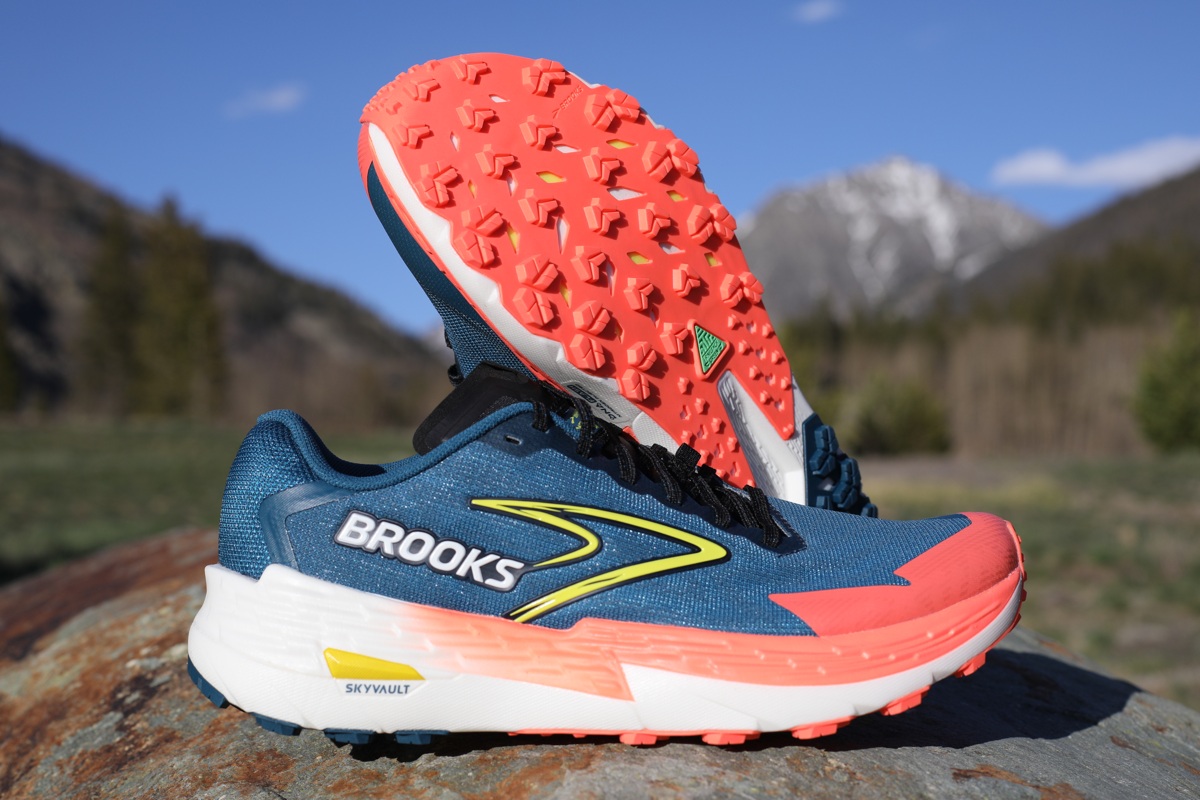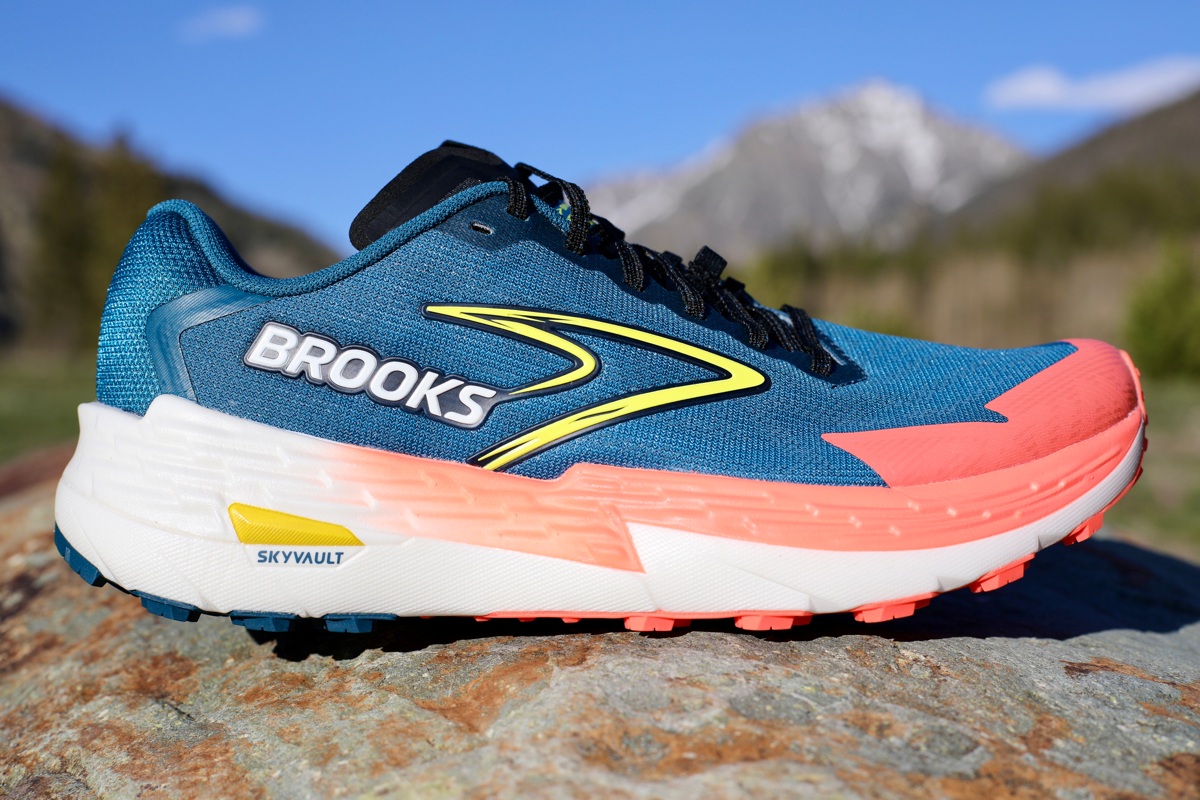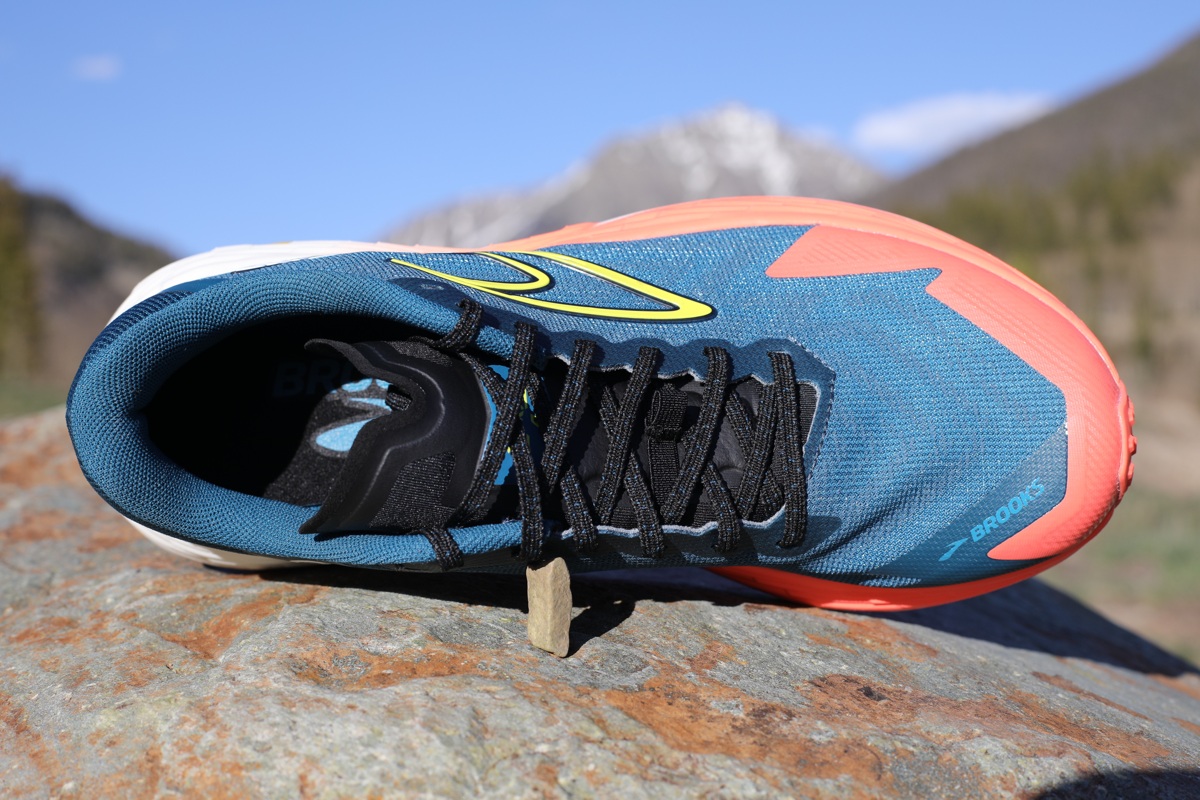The newest update to the Catamount model, the Brooks Catamount 4 ($170), comes with two millimeters of additional stack height and updates to its midsole materials and mesh upper. Its claimed weight of 9.5 ounces (269 grams) for a U.S. men’s 9 keeps this trail running shoe reasonably lightweight. Finally, its 6-millimeter drop (now based on a claimed 34-millimeter total stack height at the heel) and 3.5-millimeter lug depth are unchanged from previous iterations.
The Catamount is Brooks’ light and fast trail running option for speedy ascents and responsiveness on a variety of surfaces. Since the original Catamount launched in 2020, this shoe has developed a loyal following and has consistently held a spot on our list of Best Trail Running Shoes.
I ran in the first-generation Catamount, and although I enjoyed the shoe’s snappy lightweight feel, I craved more cushion for long training runs and ultramarathons. Other runners have shared this wish, and Brooks has responded with more cushion in each shoe update. This increased stack height might alienate fans of previous low-to-the-ground Catamount designs. However, I found that the shoe retains its firm, light-and-fast feel, even with the added cushion.
Shop the Women's Brooks Catamount 4Shop the Men's Brooks Catamount 4
Brooks Catamount 4 Upper
Lacing up the Brooks Catamount 4 feels like readying for a race. The shoe’s single-layer mesh upper is made with TPEE fibers, a type of thermoplastic elastomer known for its flexibility and strength. Indeed, the upper feels thin, lightweight, and breathable, yet durable enough for trails. It hugs my foot securely whether I’m on a rolling tempo run, lapping hill strides, or rock-hopping down a technical trail. The textured laces stay put, and I can also tuck them out of the way using the elastic band over the midfoot.
I’ve run in various models of Brooks trail running shoes, including the Cascadia and the Divide most recently, and I’ve noticed that Brooks designs have a more traditional fit around the midfoot and toebox. This means that the toebox is not especially roomy, wide, or rounded, like many popular trail running shoes. My foot has an average width, arch profile, and instep height, and the Catamount 4 provides a snug fit that does not feel restrictive at all. I ran on a mix of dirt, packed and slushy snow, rocky and icy trails, as well as steep grades. I did not experience any hot spots or unusual wear on the upper through the first 85 miles of testing the Catamount 4.
Brooks Catamount 4 Midsole
As with previous versions of this shoe, the Brooks Catamount 4 midsole is constructed with DNA FLASH nitrogen-infused foam and a SkyVault propulsion plate. Both technologies have been updated to version two, with a stated goal of improved energy return for uphill running. The foam midsole now has an extra two millimeters of height, which may not seem like much, but it could be a dealbreaker for runners who prefer being closer to the ground. Changes to the SkyVault Plate include a curved design and placement within the midsole to optimize responsiveness.
During testing, the Catamount 4 felt responsive and nimble, though it doesn’t have the bouncy energy return of Nike’s ZoomX foam, for example. The midsole foam feels firm, rather than bouncy. Runners who prefer a slightly more stable midsole foam may prefer this shoe’s snappy responsiveness. I enjoyed this shoe whether I was on a tempo run or out for an easy neighborhood loop with my dogs. It’s the kind of shoe that can work well as an everyday training shoe and also feel light and speedy on race day.
The SkyVault trail plate is designed to help with uphill propulsion. I don’t know that this technology will make up for a lack of fitness, but I do think it feels agile enough on short, punchy climbs and long, gradual grinds. The shoe’s overall lightweight feel doesn’t hurt, either.
Brooks Catamount 4 Outsole
The Brooks Catamount 4 incorporates the brand’s TrailTack Green rubber and has 3.5-millimeter lugs. This is a versatile outsole design that has performed well in everything that central Oregon winter has to offer: slushy, sloppy snow, packed snow and ice, mud, gravel, wet rocks, and — occasionally — hero dirt. I never had traction issues in any of these conditions. Since I regularly run on pavement from my house to access trails, I appreciate that the outsole doesn’t feel too clunky or sticky on roads.
Brooks Catamount 4 Overall Impressions
The Brooks Catamount 4 is designed for running fast on trails, particularly while going uphill. I agree that this is a great application of this shoe, and with this model’s added cushion, I would push the distance in this shoe up to a trail marathon or 50k. For longer distances, I’d still want plusher foam under my feet.
Even with the increased cushion, especially compared to the original Catamount, this shoe still feels lightweight and nimble. I run in this shoe for daily miles, workouts, and would choose it for shorter, more technical races, like a sky race or vertical kilometer. In other words, this is a versatile trail running shoe that’s fun to lace up for just about any run. If you’re looking for one shoe for daily running, workouts, and races that are 50k or shorter, the Catamount 4 is worth considering.
Shop the Women's Brooks Catamount 4Shop the Men's Brooks Catamount 4
Call for Comments
- Have you tried the Brooks Catamount 4? What do you think?
- How does the Brooks Catamount 4 compare with previous versions of this shoe?
Our Favorite Trail Running Shoes
Check out our Best Trail Running Shoes article to learn about our current favorite trail running shoes!





